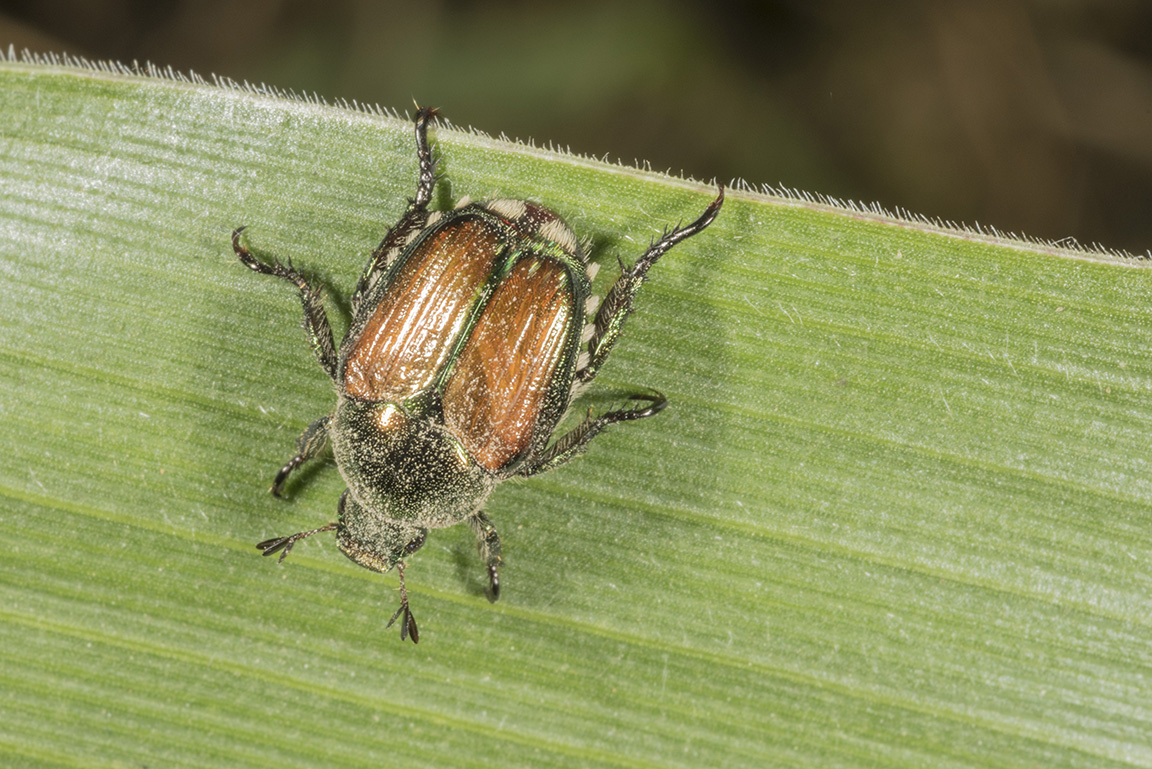Japanese beetle adults are emerging, though slowly, throughout the state. This will continue for the next several weeks, and the adults will live through much of the month of August. It isn’t uncommon for beetle emergence to spike shortly after a rainfall, as this softens up the soil for their climb to the surface.
These adults are the product of eggs that were laid by female beetles last summer. After eggs hatched last year, the grubs immediately began to feed on roots and decaying organic matter in the soil. They continue their feeding from late summer into the fall and this is not economically important damage – the grubs are small and the plants are large by this point. The grubs overwintered several inches deep in the soil and returned to near the soil surface to feed early this spring.
Adult Japanese beetles will feed on more than 300 different species of plants, but are especially fond of roses, grapes, smartweed, soybeans, corn silks, flowers of all kinds, and overripe fruit. Beetle damage to cultivated crops is often minimal and defoliation (leaf removal) on soybean usually looks much worse than it is and is mostly confined to edges. The beetles often congregate in several areas of a soybean field, feeding on and mating in the upper canopy. This is often observed by producers driving by field margins. The beetles iridescent, metallic color catches the attention of those doing “windshield” field inspections. Closer inspections will often reveal that weeds, especially along the fence lines, have made fields even more attractive to the beetles.
Although soybeans can sometimes sustain economic damage from the feeding of the beetles, the plant has an amazing ability to withstand considerable damage (defoliation) before economic losses occur. The impact of defoliation is greatest during flowering and pod fill because of the importance of leaf area to photosynthesis, and ultimately to yield. Therefore, thresholds are different at different times – nearly 30% soybean defoliation before bloom or 10% defoliation from bloom to pod fill can be tolerated before yields are economically affected. This average defoliation must occur on the whole plant, not just the upper canopy. In corn, Japanese beetle feeding on corn silks is usually minimal and spotty. Field inspections will often reveal that this feeding is not prevalent much beyond field borders. If beetles are feeding on corn silks, an insecticide should be applied only if silks are being cut off to less than 1/2 inch before 50% pollination has taken place. This level of damage is rare in recent years. Beetles are often attracted to dead or dying silks to feed, obviously beyond 50% pollination.



